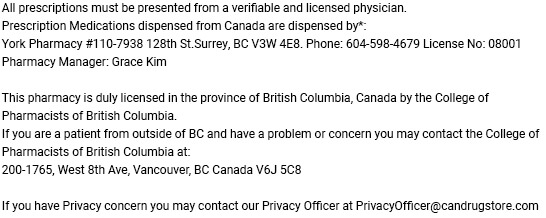Description
Indications
Naphazoline serves as a decongestant, offering relief from redness, swelling, and itching or watering eyes attributed to conditions like colds, allergies, or irritations from factors like smog, swimming, or wearing contact lenses. It functions as a sympathomimetic, specifically an alpha receptor agonist, working within the eye to alleviate congestion.
In addition to naphazoline, certain brands of eye drops may incorporate other components. Lubricants, such as glycerin, hypromellose, or polyethylene glycol 300, play a role in safeguarding the eyes against further irritation. Zinc sulfate, an astringent, contributes to the reduction of redness and irritation in the eyes.
Uses and Dosage
This medication is administered as a suspension and instilled in the eyes. Typically, it is used three times a day, starting one day before cataract surgery, on the day of surgery, and for a 14-day period following the surgery.
To ensure optimal efficacy, eye drops should be used at consistent times daily. The instructions on the prescription label should be carefully adhered to, and any questions should be addressed to the prescribing physician or pharmacist.
The prescribed dosage of eye drops should not be exceeded, nor should it be used more frequently or for a longer duration than instructed by the physician.
To administer the eye drops, the following steps should be followed:
- Thoroughly wash hands with soap and water.
- Do not allow the dropper tip to touch the eye or any other surface, and ensure that it is kept clean.
- Tilt the head back and pull down the lower lid of the eye using the index finger to form a pocket.
- Hold the dropper as close to the eye as possible without making contact, and brace the remaining fingers against the face.
- Squeeze the dropper gently to instill a single drop in the pocket created by the lower eyelid while looking upwards.
- Remove the index finger from the lower eyelid and keep the eye closed for 2-3 minutes while tilting the head down.
- Apply gentle pressure to the tear duct using a finger.
- Use a tissue to wipe off any excess liquid from the face.
- Wash hands to remove any residual medication.
Side Effects
Some side effects may occur that usually do not need medical attention:
- headache
- runny nose
- pain or pressure in the face
- nausea
- vomiting
- dry, itchy, or sticky eyes
Inform your healthcare provider immediately if you experience any serious side effects:
- red or bloody eyes
- eye pain
- feeling that something is in the eye
- sensitivity to light
- blurred or decreased vision
- seeing specks or spots
- teary eyes
- eye discharge or crusting
Caution
- Prior to using naphazoline, inform your doctor or pharmacist of any allergies you may have, including allergies to this medication or its inactive ingredients, such as benzalkonium chloride, which may lead to allergic reactions or other complications.
- Inform your physician or pharmacist of your medical history, particularly if you have heart issues such as high blood pressure, glaucoma, diabetes, eye infections or injuries, or an overactive thyroid (hyperthyroidism), prior to using this medication.
- Temporary vision blurring may occur following administration of this medication.
- Naphazoline may rarely induce dizziness or drowsiness. Alcohol or cannabis use can exacerbate these side effects. Do not operate machinery, drive, or engage in activities that require alertness or clear vision until you can do so safely.
- During pregnancy, only use this medication when it is absolutely necessary. Discuss the potential risks and benefits with your physician.
- It is unclear if this drug passes into breast milk. Consult your doctor before breastfeeding.
Form and Strength
Clear Eyes Allergy is available in the following forms and strengths:
- Clear Eyes Allergy eyedrops:
- 0.012 / 0.2 / 0.25 %
FAQ
Is Clear Eyes good for your eyes?
Overuse of Clear Eyes can sometimes worsen your eye condition and cause your eyes to become redder.
How long does it take for Clear Eyes to wear off?
After your eyes are fully dilated, the effects will last for four to six hours for most people.
Resources
- https://www.goodrx.com/clear-eyes-redness-relief/what-is
- https://www.healthline.com/health/how-long-does-eye-dilation-last#:~:text=After%20your%20eyes%20are%20fully,full%20day%20after%20the%20exam
- https://www.everydayhealth.com/drugs/clear-eyes-allergy-itch-relief
- https://www.webmd.com/drugs/2/drug-149715/clear-eyes-itchy-eye-relief/details
- https://www.mayoclinic.org/drugs-supplements/naphazoline-ophthalmic-route/description/drg-20067811
- https://www.drugs.com/mtm/clear-eyes.html


 Prescription Required
Prescription Required  Formulation :
Formulation : 





